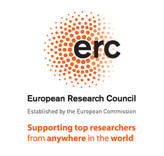Random Matrices and Random Graphs
Matrices et graphes aléatoires
15 – 19 April, 2019
|
Scientific Committee
Comité scientifique Charles Bordenave (CNRS / Aix-Marseille Université) |
Organizing Committee
Comité d’organisation Mireille Capitaine (Université Paul-Sabatier) |
|
The conference « Random Graphs and Random Matrices » will focus, but not only, on three themes: universality, random graphs and applications of random matrix theory (RMT). This conference where 70 participants are expected, will consist of 20 talks of 45 minutes (half of them given by international experts), two minicourses of 3 hours each and a poster session intended to young scientists. One of the minicourses will be given by Justin Salez on random graphs, and the other by Nalini Anantharaman on delocalization and quantum chaos.
The theory of random matrices was born in the first half of the 20th century in work on multivariate statistics, which led to natural and still topical questions, such as the study of empirical covariance matrices. It saw a second impetus in the 50s and 60s in the works of physicists such as Wigner, Dyson, and Mehta. Subsequently, the subject was taken up by mathematicians and has found a home in a variety of mathematical communities. These obviously include probability and statistics, but also for instance mathematical physics and the study of random Schrödinger operators, analytic number theory and connections to the Riemann conjecture, or the theory of operator algebras and connections to free probability and the Connes conjecture. Let us also mention numerous applications of random matrices, for instance in signal processing and statistical learning, where the natural closeness of the subject to the theory of random graphs is particularly apparent. This conference is a project launched under the auspices of the GDR (groupement de recherche) MEGA (Matrices et Graphes Aléatoires), which assembles around 70 scientists in France. |
La conférence « Matrices Et Graphes Aléatoires » sera principalement consacrée à 3 thèmes importants en théorie des grandes matrices aléatoires: l’universalité, les graphes aléatoires et les applications des grandes matrices aléatoires. Cette conférence, où environ 70 participants sont attendus, consistera en 20 exposés de 45 minutes (dont la moitié sera donnée par des experts internationaux), 2 mini-cours de 3 heures chacun, et une session de posters à destination des jeunes scientifiques. L’un des mini-cours sera donné par Justin Salez et portera sur les graphes aléatoires; le second, par Nalini Anantharaman et portera sur la délocalisation des fonctions propres et le chaos quantique.
La théorie des matrices aléatoires est née dans la première moitié du 20ème siècle avec des travaux de statistiques multivariées, autour de questions naturelles et encore porteuses d’interrogations, comme l’étude de matrices de covariance empiriques. Elle a connu un second départ dans les années 50 et 60 avec les travaux de physiciens comme Wigner, Dyson et Mehta. Le sujet s’est alors imposé dans les mathématiques au sein de communautés assez variées. En probabilités et statistiques bien sûr, mais aussi en physique mathématique avec les opérateurs de Schrödinger aléatoires, en théorie analytique des nombres pour le lien avec la conjecture de Riemann, ou en algèbre d’opérateurs pour les liens avec les probabilités libres et la conjecture de Connes. Mentionnons enfin l’utilisation des matrices aléatoires dans de nombreux contextes d’applications, comme le traitement du signal ou l’apprentissage statistique, où la proximité naturelle du sujet avec celui des graphes aléatoires est particulièrement visible. Cette conférence, appelée « Random Graphs and Random Matrices », est un projet mis en place sous l’égide du GDR (groupement de recherche) MEGA (Matrices et Graphes Aléatoires), qui rassemble quelque 70 scientifiques en France. |
Johannes Alt (Université de Genève)
Anirban Basak (Tata Institute of Fundamental Research)
Anna Ben-Hamou (Sorbonne Université)
Nicholas Cook (Stanford University)
Sandrine Dallaporta (ENS Cachan)
Raphael Ducatez (Université de Genève)
Laure Dumaz (CNRS / Université Paris-Dauphine)
Alice Guionnet (CNRS / ENS Lyon)
Adrien Hardy (Université Lille 1)
Jiaoyang Huang (Harvard University)
Pierre Le Doussal (LPT ENS)
Satya Majumdar (CNRS / Université Paris Sud)
Joseph Najnudel (University of Bristol)
Ion Nechita (CNRS / Université de Toulouse)
Yuriy Nemish (IST Austria)
Alain Rouault (UVSQ Université Paris-Saclay)
Kevin Schnelli (KTH Royal Institute of Technology)
Roland Speicher (Saarland University)
Posters Session
Ievgenii Afanasiev (Kharkiv National University)
Giusi Alfano (Polytechnic University of Turin)
Sergey Berezin (CNRS, PDMI RAS)
Lorenzo Dall’Amico (GIPSA lab – Université Grenoble Alpes)
Michael Fleerman (University of Hagen)
Thomas Krajewski (Aix-Marseille Université)
Cosme Louard (GIPSA lab – Université Grenoble Alpes)
Nathan Noiry (Modal X Université Paris Nanterre)
Agnieszka Piliczek (Warsaw University ofTechnology)
Marco Stevens (KU Leuven)
Daria Tieplova (Université Paris-Est Marne La Vallée)







